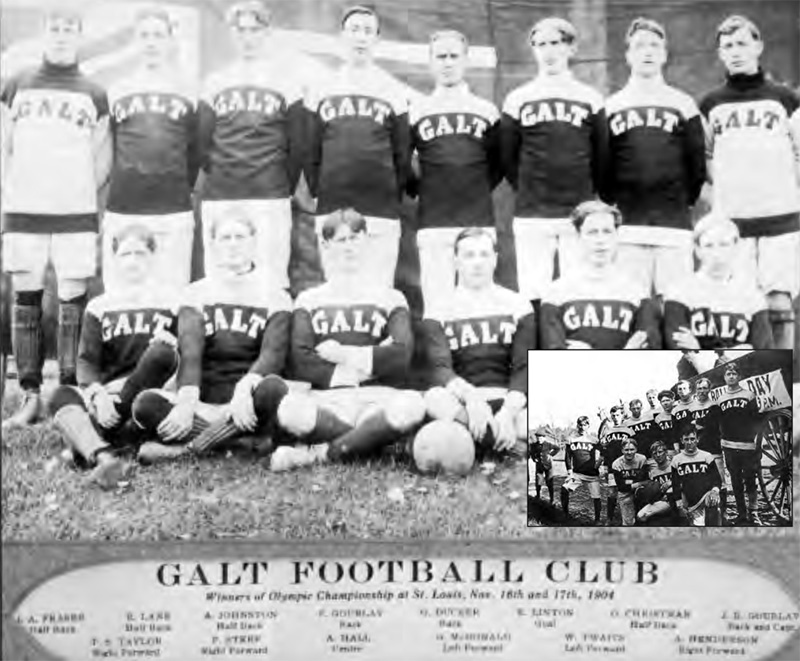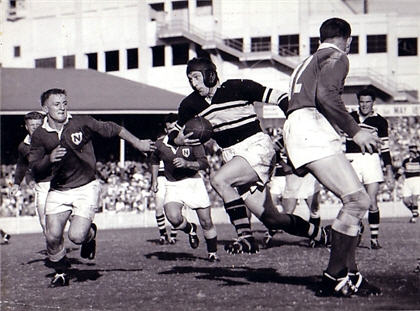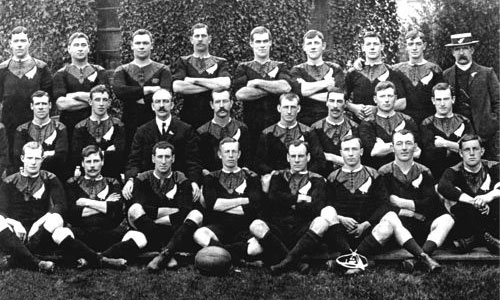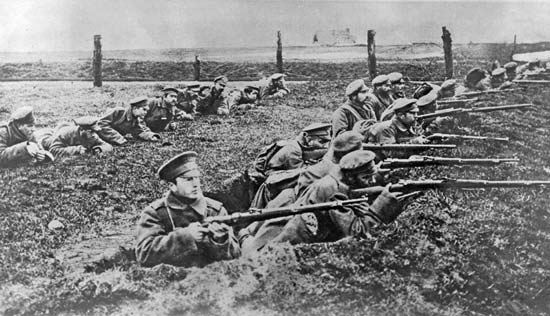THE HISTORY OF PROFESSIONALISM IN RUGBY
Part 1: The only sane choice...
At the end of the 19th century, the sport of rugby was on the brink of a civil war.
https://rainbowdesign.co.uk/wp-content/uploads/2017/06/RFU-logo.png
Founded by 22 influential clubs from Southern England on 26 January 1871, the Rugby Football union standardized the rules of the rugby game, formed by students of the university of the same name, and, for the longest time, was against payment of players and staff, as many influential members believed that it would corrupt the game much like it did with the "other" football.
https://uncomradelybehaviour.files.wordpress.com/2012/05/ub-rugby-league.jpg
many clubs, however, didn't share that viewpoint. the most staunch supporters of player payments were the clubs of northern England. they constantly made efforts to make the game accessible to the working class, in direct opposition to the bourgeoisie image the game had at that time, and, since most of those northern clubs were made of poor people who couldn't afford to miss time from work to play games, they felt they had no choice but to convince the RFU to listen to their pleas.
for a long while, the struggle continued, as the RFU believed the northern clubs to be heretics, while the northerners called the RFU upper class twits and an old boys club. there was even plans to found a rebel rugby union, based in the north, in order to turn the game pro, even if it meant being banned.
then, after years of conflict, top southern England clubs have decided to stop the infighting and invited the northern clubs so that they can open talks about professionalism, eventually leading to an all important vote in 1893. every concerned parties were nervous, as they knew this vote will shape the future of the sport for years to come...
Amidst a really close vote that ended 32 for to 28 against, the rugby Football union has decided to allow payment for players, finally ending years of internal strife.
https://www.nwemail.co.uk/resources/images/9034154.jpg?display=1&htype=0&type=responsive-gallery
this was a huge relief for the poorer northern clubs, and especially the players, who now could make a living playing the game, just like their compatriots in football.
https://upload.wikimedia.org/wikipedia/en/9/9c/New_RFL_logo.png
with those news also came the announcement of a brand new competition for professional clubs only. after much debate, It has been decided that 22 clubs will take part in the Rugby Football League's first season, to begin play on September 7th, 1895, all chosen due to either their prestige, their influence on the game and their adequate facilities:
CHARTER CLUBS OF THE RUGBY FOOTBALL LEAGUE:
- Harlequins FC, From London
- Leicester FC, From Leicester (now Tigers)
- Blackheath, From London
-Northampton Saints, From Northampton
- Wasps RFC, From London
- Gloucester Rugby, From Gloucester
- Leeds St. John's (now Carnegie)
- Halifax RFC
- Wigan FC (now warriors)
- Manningham
- St. Helens
- Hull FC
- Oldham RFC
- Wimbledon Hornets
- Richmond FC
- Bradford FC (now Bulls)
- Warrington Zingari Football Club (now wolves)
- Clapham Rovers
- Huddersfield Athletic Club (now giants)
- Bristol Rugby
- Marlborough Nomads
- Leigh
the rest of the clubs were scattered to the second division, with the regional leagues representing the lower echelons of the brand new rugby pyramid..
https://www.yorkshirecarnegie.com/media/files/images/Stadium-History.jpg
the kickoff to the professional era of rugby began at 3PM at Leeds as st. John's took on manningham in front of 20.000 people, where the local favorites won by the score of 10-0.
despite this loss, Manningham would bounce back and become one of the major players in that inaugural league championship, winning the title by only one point over runner-ups Halifax. the southern clubs, expected to challenge for the titles due to their superior training conditions and quality of play, were stunned by those two northern clubs. nonetheless, Leicester, Northampton and the surprising Gloucester rounded up the top 5.
it was a tough season for many London based clubs, with wasps finishing mid-table in 13th and Harlequins crashing down in 17th place! Bristol barely survives relegation by 1 point over Wimbledon, with Huddersfield, Marlborough Nomads and punching bags Clapham Rovers (only 4 wins!) joining them down into the second division. Those 4 clubs will be replaced by Salford, Runcorn, Brighouse and Playoff Winners Gosforth FC (Now Newcaste Falcons).
1895-1896 RUGBY FOOTBALL LEAGUE
FINAL STANDINGS
1. Manningham 33W 0D 9L 66 PTS
2. Halifax 30W 5D 7 L 65 PTS
3. Leicester Tigers 24W 8D 10 L 56 PTS
4. Northampton Saints 27W 2D 13 L 56 PTS
5. Gloucester Rugby 22W 9D 11L 53 PTS
6. Oldham 21W 8D 13 L 50 PTS
7. Blackheath 24W 2D 16L 50 PTS
8. Hull FC 23W 3D 16 L 49 PTS
9. Richmond FC 21W 4D 17L 46 PTS
10. Wigan 19W 7D 16 L 45 PTS
11. Bradford 18W 9D 15L 45 PTS
12. Leeds St. John's 20W 3D 19L 43 PTS
13. Wasps 17W 5D 20L 39 PTS
14. St. Helens 15W 8D 19L 36 PTS
15. Leigh 15W 4D 23L 34 PTS
16. Warrington 14W 4D 24L 32 PTS
17. Harlequins FC 12W 8D 22L 32 PTS
18. Bristol 12W 7D 23L 31 PTS
19. Wimbledon hornets 13W 4D 25L 30 PTS
20. Huddersfield 10W 4D 28L 24 PTS
21. Marlborough Nomads 8W 8D 26L 24 PTS
22. Clapham Rovers 4W 8D 30L 16 PTS
...and we have a liftoff!Part 1: The only sane choice...
At the end of the 19th century, the sport of rugby was on the brink of a civil war.
https://rainbowdesign.co.uk/wp-content/uploads/2017/06/RFU-logo.png
Founded by 22 influential clubs from Southern England on 26 January 1871, the Rugby Football union standardized the rules of the rugby game, formed by students of the university of the same name, and, for the longest time, was against payment of players and staff, as many influential members believed that it would corrupt the game much like it did with the "other" football.
https://uncomradelybehaviour.files.wordpress.com/2012/05/ub-rugby-league.jpg
many clubs, however, didn't share that viewpoint. the most staunch supporters of player payments were the clubs of northern England. they constantly made efforts to make the game accessible to the working class, in direct opposition to the bourgeoisie image the game had at that time, and, since most of those northern clubs were made of poor people who couldn't afford to miss time from work to play games, they felt they had no choice but to convince the RFU to listen to their pleas.
for a long while, the struggle continued, as the RFU believed the northern clubs to be heretics, while the northerners called the RFU upper class twits and an old boys club. there was even plans to found a rebel rugby union, based in the north, in order to turn the game pro, even if it meant being banned.
then, after years of conflict, top southern England clubs have decided to stop the infighting and invited the northern clubs so that they can open talks about professionalism, eventually leading to an all important vote in 1893. every concerned parties were nervous, as they knew this vote will shape the future of the sport for years to come...
Amidst a really close vote that ended 32 for to 28 against, the rugby Football union has decided to allow payment for players, finally ending years of internal strife.
https://www.nwemail.co.uk/resources/images/9034154.jpg?display=1&htype=0&type=responsive-gallery
this was a huge relief for the poorer northern clubs, and especially the players, who now could make a living playing the game, just like their compatriots in football.
https://upload.wikimedia.org/wikipedia/en/9/9c/New_RFL_logo.png
with those news also came the announcement of a brand new competition for professional clubs only. after much debate, It has been decided that 22 clubs will take part in the Rugby Football League's first season, to begin play on September 7th, 1895, all chosen due to either their prestige, their influence on the game and their adequate facilities:
CHARTER CLUBS OF THE RUGBY FOOTBALL LEAGUE:
- Harlequins FC, From London
- Leicester FC, From Leicester (now Tigers)
- Blackheath, From London
-Northampton Saints, From Northampton
- Wasps RFC, From London
- Gloucester Rugby, From Gloucester
- Leeds St. John's (now Carnegie)
- Halifax RFC
- Wigan FC (now warriors)
- Manningham
- St. Helens
- Hull FC
- Oldham RFC
- Wimbledon Hornets
- Richmond FC
- Bradford FC (now Bulls)
- Warrington Zingari Football Club (now wolves)
- Clapham Rovers
- Huddersfield Athletic Club (now giants)
- Bristol Rugby
- Marlborough Nomads
- Leigh
the rest of the clubs were scattered to the second division, with the regional leagues representing the lower echelons of the brand new rugby pyramid..
https://www.yorkshirecarnegie.com/media/files/images/Stadium-History.jpg
the kickoff to the professional era of rugby began at 3PM at Leeds as st. John's took on manningham in front of 20.000 people, where the local favorites won by the score of 10-0.
despite this loss, Manningham would bounce back and become one of the major players in that inaugural league championship, winning the title by only one point over runner-ups Halifax. the southern clubs, expected to challenge for the titles due to their superior training conditions and quality of play, were stunned by those two northern clubs. nonetheless, Leicester, Northampton and the surprising Gloucester rounded up the top 5.
it was a tough season for many London based clubs, with wasps finishing mid-table in 13th and Harlequins crashing down in 17th place! Bristol barely survives relegation by 1 point over Wimbledon, with Huddersfield, Marlborough Nomads and punching bags Clapham Rovers (only 4 wins!) joining them down into the second division. Those 4 clubs will be replaced by Salford, Runcorn, Brighouse and Playoff Winners Gosforth FC (Now Newcaste Falcons).
1895-1896 RUGBY FOOTBALL LEAGUE
FINAL STANDINGS
1. Manningham 33W 0D 9L 66 PTS
2. Halifax 30W 5D 7 L 65 PTS
3. Leicester Tigers 24W 8D 10 L 56 PTS
4. Northampton Saints 27W 2D 13 L 56 PTS
5. Gloucester Rugby 22W 9D 11L 53 PTS
6. Oldham 21W 8D 13 L 50 PTS
7. Blackheath 24W 2D 16L 50 PTS
8. Hull FC 23W 3D 16 L 49 PTS
9. Richmond FC 21W 4D 17L 46 PTS
10. Wigan 19W 7D 16 L 45 PTS
11. Bradford 18W 9D 15L 45 PTS
12. Leeds St. John's 20W 3D 19L 43 PTS
13. Wasps 17W 5D 20L 39 PTS
14. St. Helens 15W 8D 19L 36 PTS
15. Leigh 15W 4D 23L 34 PTS
16. Warrington 14W 4D 24L 32 PTS
17. Harlequins FC 12W 8D 22L 32 PTS
18. Bristol 12W 7D 23L 31 PTS
19. Wimbledon hornets 13W 4D 25L 30 PTS
20. Huddersfield 10W 4D 28L 24 PTS
21. Marlborough Nomads 8W 8D 26L 24 PTS
22. Clapham Rovers 4W 8D 30L 16 PTS
So yeah, this TL is based on a sport i really love: rugby!
and the main POD is, quite simply, the RFU listening to reason and actually listening to the northern club and proceeded to a vote to allow professionalism into the sport. this won't be the only POD, though. there will be plenty of PODs that will significantly change rugby's developement across the world, and will significantly affect American sports history!
next post will be the first few years of the Rugby Football League, the arrival of the sport across Europe and australasia and the struggle with keeping fans as Soccer starts to rise into public consciousness, prompting many influential forces in rugby to consider doing something about it...
this TL is done in collaboration with @Neoteros, who will take care of the soccer side of this sports universe.
Last edited:



















